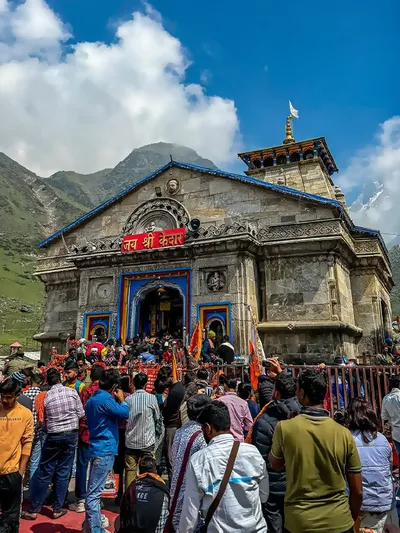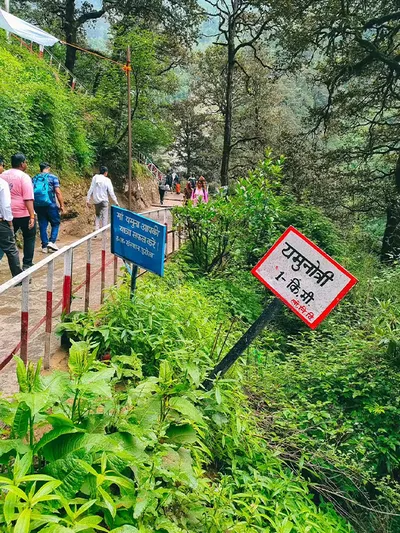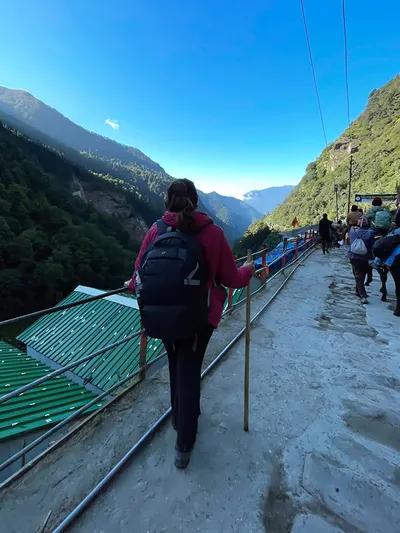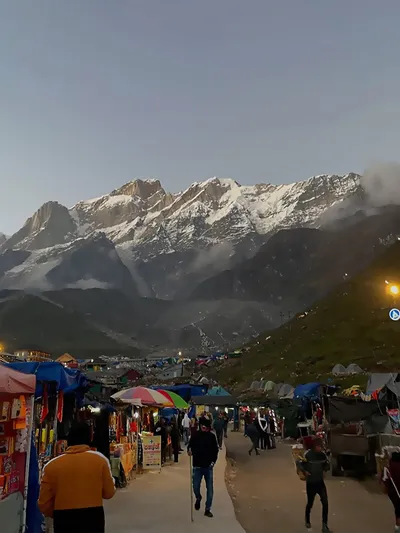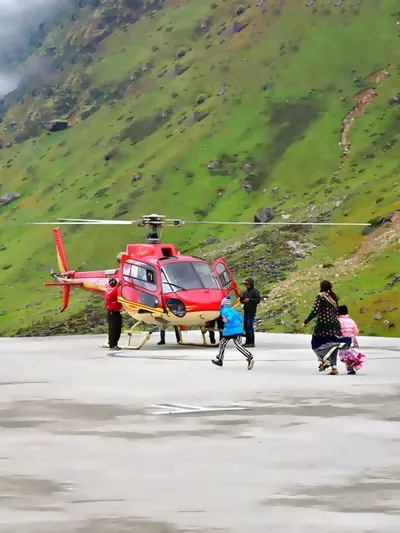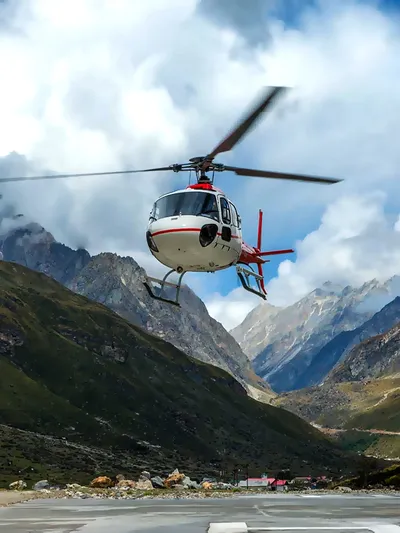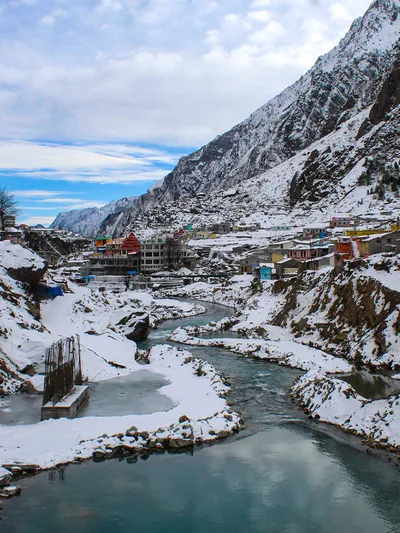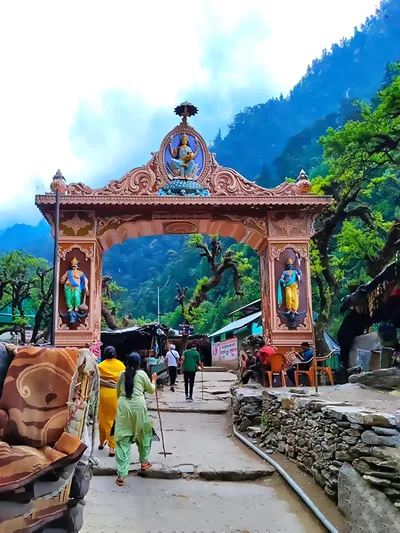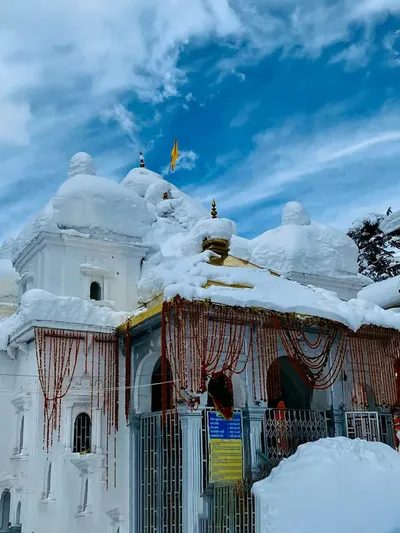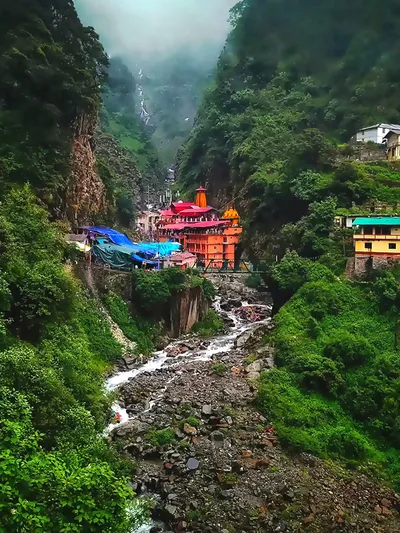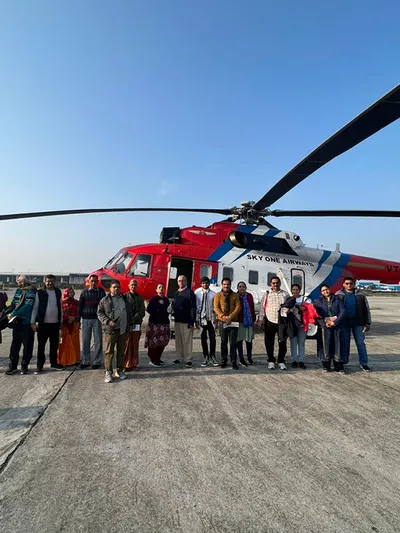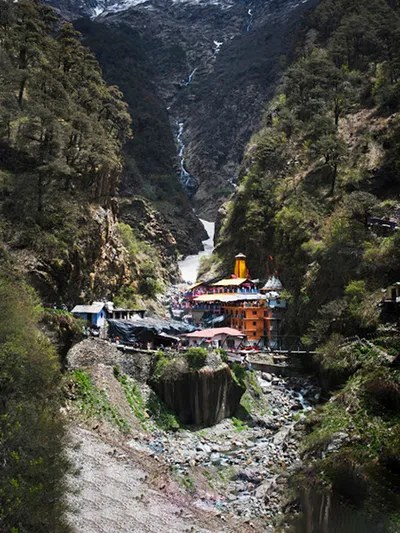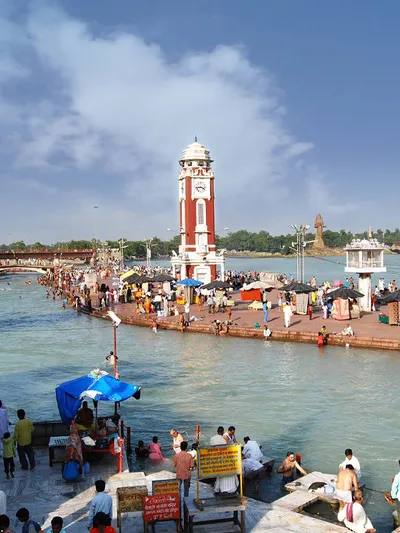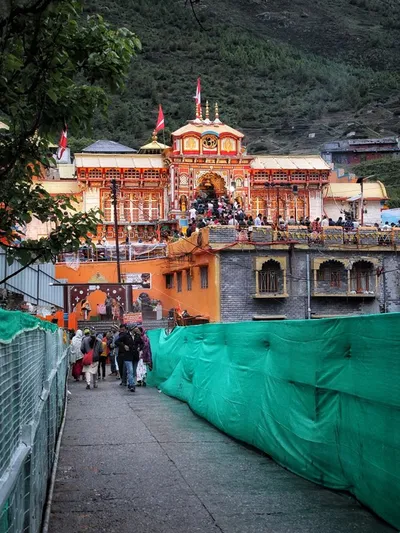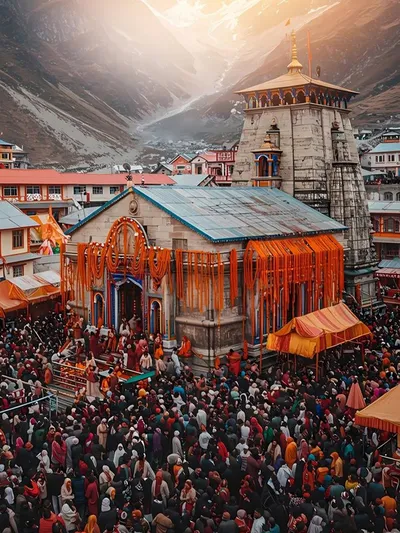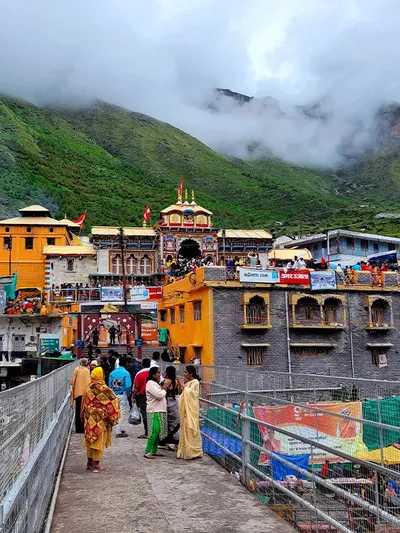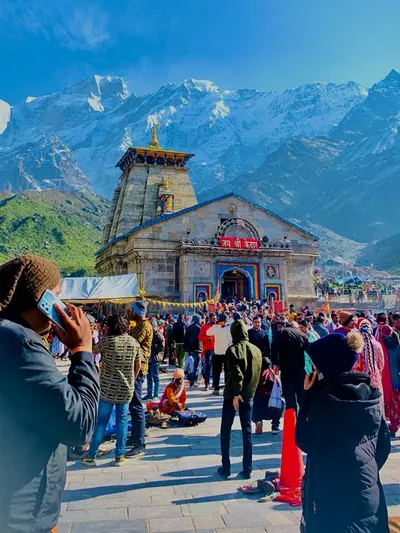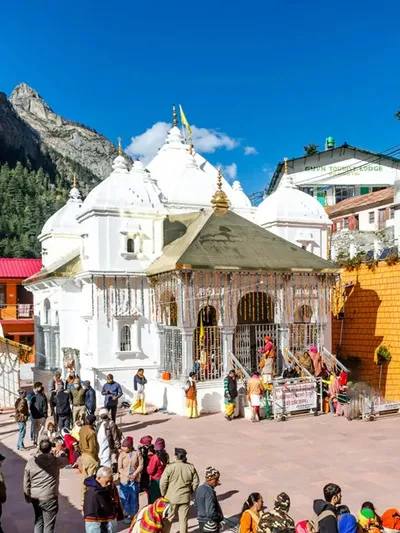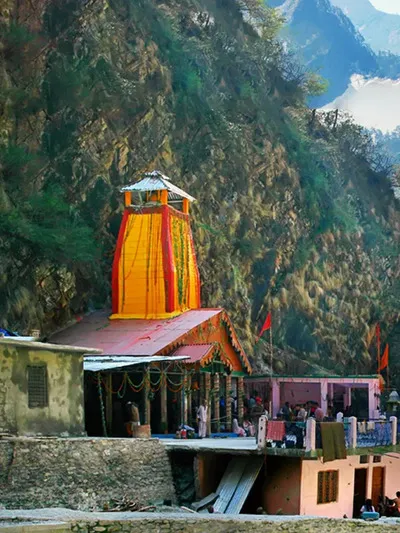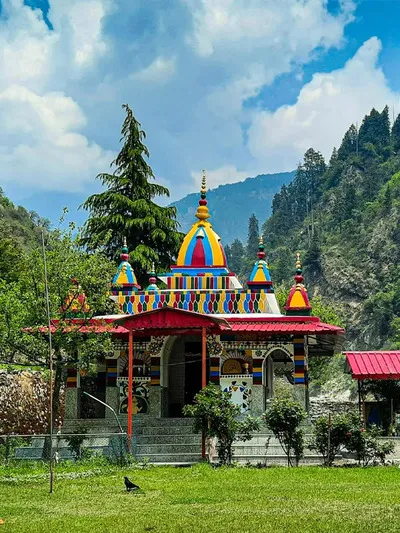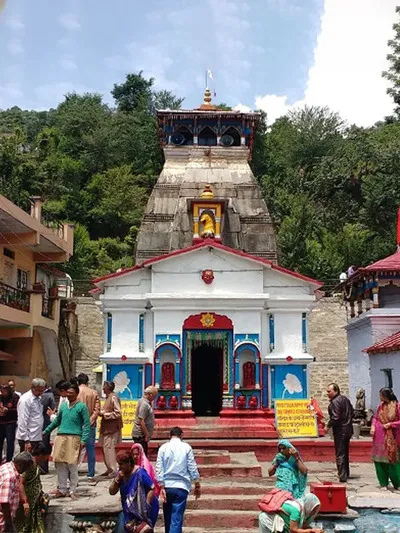Chardham Temples Committee
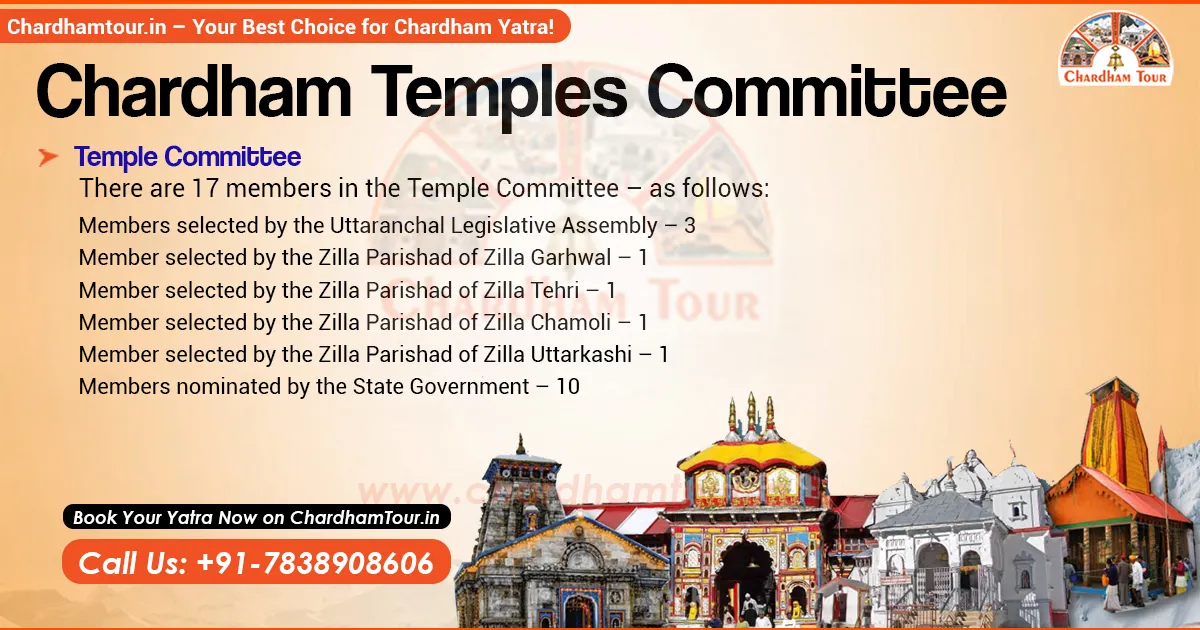
Shri Badri – Kedar Mandir Samiti is a registered compact and organized structure actively involved in preservation, conservation, growth, developments and Promotion of Badrinath, Kedarnath and others temples and tourist places covered by Badri-kedar Mandir Samiti. Besides these Temple Committee take part in social welfare and establishment of new and maintain presently running Guest houses & Dharamshala for betterment of devotee and promote pilgrimage.
Organizational Structure of Badri-Kedar Mandir Samiti
Administration of Shrine
According the Act No. 30/1948 of Uttar Pradesh the administration of Kedarnath and Badrinath both Temples would be governed by Shri Badarinath Mandir & Sri Kedarnath Mandir Samiti. The members of Samiti including public representative, Chairman, Members, Governments officials.
Temple Committee:
There are 17 members in Temple committee – As follow
- Members selected by the Uttaranchal Legislative Assembly – 3
- Member selected by the Zilla Parishad of Zilla Garhwal – 1
- Member selected by the Zilla Parishad of Zilla Tehri – 1
- Member selected by the Zilla Parishad of Zilla Chamoli – 1
- Member selected by the Zilla Parishad of Zilla Uttarkashi – 1
- Members nominated by the State Government – 10
President and Vice chairman of this committee from above members is nominated by the State Government.
The Present Committee
These personals are President & members of the committee.
President – Shri Ganesh Godiyal (M.L.A)
Vice President – Smt. Madhu Bhatt
Members – Shri Rakesh Dhyani, Shri Dayaram Purohit, Shri Gulab Singh Negi, Shri Harish Dimri, Smt. Amita Jina, Shri Keshav Prasad Thapliyal, Shri Rajendra Prasad Dabral, Smt. Sunita Shukla, Shri Chandra Kishore Maithani, Shri Bachan Singh Rawat.
Distribution of Powers
Bureaucracy implies the instruction issued by state government and Mandir Samiti.
- Chief Executive Officer: Sh. B.D. Singh
- Dy. Chief Executive Officer: Sh. Jagdamba Prasad Namboodri
- OSD: Sh. Lokanand Sati
- Executive Officer: Sh. Anil Sharma
- OSD (PR): Sh. Ansuya Singh Negi
- Account Officer: Sh. Sunil Tiwari
- Temple Officer: Sh. Bhupendra Pd. Maithani
- Publicity Officer: Sh. N.P. Jamloki
Religious/ Priest Structures of Badrinath Temple
Rawalji (Main Priest Badarinath): Shri Keshav Prasad Namboodari
Nayab Rawal Badarinath: Shri Ishwari Prasad Namboodri
Dharmadhikari Badarinath: Shri Bhuvan Chandra Uniyal (Acting)
Vedpathi Badarinath: Shri Satya Prasad Chamola, Shri Radha Krishna Thapliyal, Shri Kushla Nand
Bahuguna.
Religious/ Priest Structures of Kedarnath Temple
Rawalji (Chief Priest Kedarnath ): Shri Bhima Shankar Ling Shivacharya
Acharya / Dharmadhikari, Kedarnath: Shri Umadutt Semwal
Vedpathi, Kedarnath: Shri Chandra Shekhar Semwal, Shri Omkar Shukla, Shri Yashodhar Maithani, Shri
Ravindra Bhatt.
Gangotri Mandir Samiti
The name of temple committee of Gangotri shrine is Shri Panch Mandir Samiti, operated
by members of Samiti (approx having 200 members). Temple Priests & government officials are the
members of this committee. Having presidents, Vice present, chief- Secretary, secretary & members.
The head priest & chief secretary of Gangotrii shrine is Rawal Harish Semwal.
Doors Opening Timing
Door opening time of temple is-
In summer (April- Aug) – 6:15 am to 2:00 pm & 3:00 pm to 9:30 pm (summer)
In winter (sep-Nov) – 6:45 am to 2:00 pm & 3:00 to 7:00 pm.
Every year the temple closed on Yama Dwitiya & open after winter on the day of or Bhai Duj (Oct- Nov).
The temple opens on the day of Akshay Tritiya (April-May).
Special Occasion Celebrated at Gangotri
Ganga Saptami – Celebrated in the month of Vaishakh (April), it is the day when Ganga is said to have descended on earth from heaven. A special Shringar Pooja to the Deity is performed on this day.
Ganga Dushehra – In the month of Jyesth (May), this day is celebrated as the birth of river Ganga, when Lord Shiva released a stream of Ganga (Bhagirathi) from his matted hair to Bhagirath. A procession is organized by the temple committee, moving around the Mukhba village. Other deities of the village join the procession. A statue of Bhagirath leads the procession and the golden crown of Ganges symbolizes the Deity. A havan is also organized near the riverside.
Janmashtami (Aug–Sep) – Celebrated as the birthday of Lord Krishna.
Vijayadashami (Oct) – The day when Lord Rama killed Ravana.
Diwali (Nov) – The day when Lord Rama returned to Ayodhya.
Yama Dwitiya (Oct–Nov) – Also known as Bhaiya Duj, a festival celebrating the bond between brothers and sisters.
Yamunotri Mandir Samiti
There is no formal temple committee or official office at Yamunotri. The temple operations are managed by the Panch Panda Samiti, which includes around 200 pujaris or priests. During winter, when the temple is closed, the deity is ceremonially transferred to the village of Kharsali (about 2 km from Janki Chatti), where worship continues throughout the cold season.
The Yamuna Valley, also known as Rawaai Ghaati, is renowned for its breathtaking beauty. The fast and wild flow of the Yamuna River cuts through narrow, dark mountain ranges, and the lush green vegetation adds to the scenic charm of the region.
Doors Opening Timing:
During the pilgrimage season (April–May to October–November), the temple remains open daily from
6:00 am to 8:00 pm. The temple doors open on the auspicious day of Akshay
Tritiya (April–May) and close on Yama Dwitiya (Bhai Duj), two days after
Diwali.
Worship / Aarti Timings:
Daily worship is conducted at 6:30 am and 7:30 pm. Special pooja and
festivities are held on Janmashtami and Diwali.
Special Occasion Celebrated at Yamunotri
Janmashtami (Aug–Sep): Celebrated as the birthday of Lord Krishna.
Vijayadashami (Oct): The day when Lord Rama killed Ravana.
Diwali (Nov): The day when Lord Rama returned to Ayodhya.
Yama Dwitiya (Oct–Nov): Also known as Bhaiya Duj, celebrating the bond between brothers and sisters.
Worship / Aarti Timings:
The worship and other temple activities begin at 4:00 am after the Utthan
(awakening) ceremony, which is performed by the Head Priest.
The brief chart of pooja activities as follow:
- Utthan (awakening): 4:00 AM – Arise timing of Goddess (by head priest)
- Shringar: Not open to public after 4:00 AM
- Mangalaarti: 6:00 AM – Not open to public
- Darshan of Deity (for devotees): 6:00 AM to 9:00 AM
- Rajbhog (to Deity): 9:00 AM to 9:10 AM – Not open to public
- Darshan / Worship (open for devotees): 9:10 AM to 6:30 PM
- Shringar (evening): 6:30 PM to 6:40 PM – Not open to public
- Darshan of Deity (for devotees): 6:40 PM to 8:00 PM
- Rajbhog (to Deity): 8:00 PM to 8:05 PM – Not open to public
- Sandhya Aarti (Summer): 7:45 PM
- Sandhya Aarti (Winter – after Janmashtami in Aug–Sep): 7:00 PM
